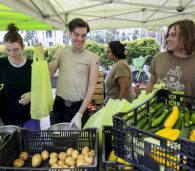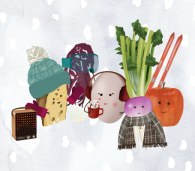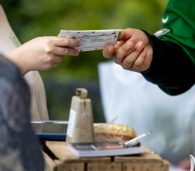FoodPrints Summer 2022: “I will never forget this”
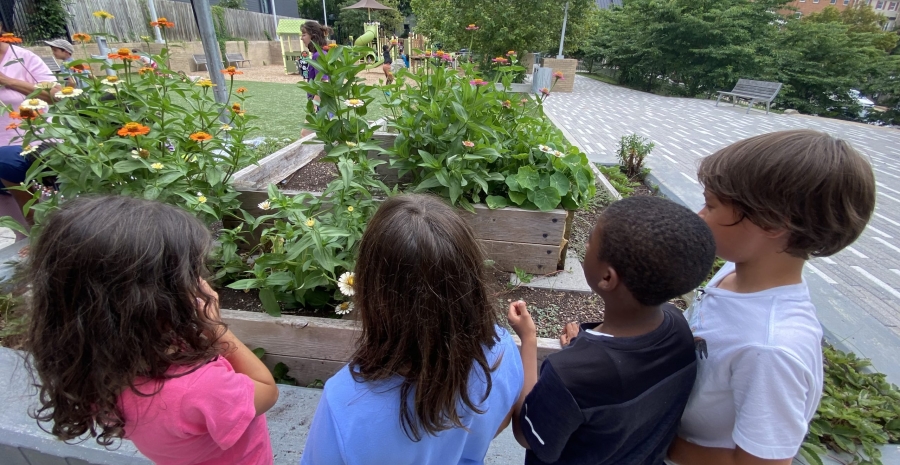
In July, we kicked off five weeks of FoodPrints summer programming for 75 rising 1st and 3rd graders at three public schools spread across Washington, DC. Students attended traditional summer school classes in the mornings, and then transitioned to FoodPrints classrooms after lunch. They spent their afternoons happily cooking, gardening, harvesting, learning about plant science and butterflies, and eating nutritious food together – all through lessons our teachers created for summer school from FRESHFARM’s FoodPrints curriculum, which is free and accessible on our website. Laniya Taylor, a rising 3rd grader in the program, said it best when asked what her favorite FoodPrints memory was: “All of it. I will never forget this. FoodPrint made my dreams come true.”
Expanding Horizons through Collaboration & Community
Collaboration–between FRESHFARM programs, partner organizations, and the students themselves–was a theme through the summer.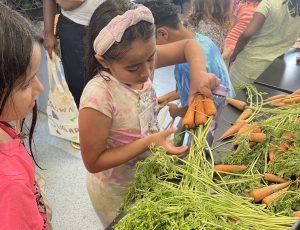
Fresh food: Each week, students at all three schools would cook with, and snack on, fresh produce from FRESHFARM’s Pop Up Food Hub. At Marie Reed, students “shopped” for produce at their very own classroom farm stand. Each student excitedly decorated their own tote bags, and when the time came to shop, they were amazed by the abundance of produce they were able to bring home to their families. Watkins students visited the nearby farm stand of Farmer Gale of Deep Roots Farm. Both allowed students to choose their own produce, learn what grows during the summer, and practice math and communication skills.
Butterflies and urban ecology research: In another collaboration, researchers at George Mason University partnered with us to involve students in urban ecology research to collect data on butterflies in school gardens and identify butterfly species. Each class also hosted an exhibit where they were able to observe caterpillars transform into butterflies. As teachers tied these observations with the FoodPrints curriculum, students learned about the butterfly life cycle and the important role they play as pollinators inside and outside the garden.
Connections with community: Our culminating field trip to The Well at Oxon Run, a newly opened intergenerational farm and community wellness space in Ward 8 where they explored the nearby creek and were introduced to the seasonal crops grown onsite. Getting to see a new place where people grow food, right in DC, was exciting for many students, with one proclaiming, “I would never miss a FoodPrints day!”
“I would never miss a FoodPrints day!”
At each of the three schools with FoodPrints programming, small communities were formed and by the time the summer ended, students were opening up and sharing about themselves, their culture, and their families. On the day the class prepared Melon Salad at Marie Reed, a few of the bilingual students were so excited to share the Spanish translation of the ingredients. Another student felt comfortable enough to share a story about how her grandma collects egg shells to then add to her plants in order to add nutrients during the What Makes Healthy Soil lesson.
Excited to Learn With—and Work With—Peers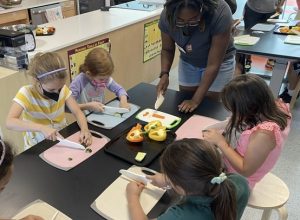
While the pandemic reduced students’ opportunities to interact with each other and practice interpersonal and self-management skills, programs like FoodPrints help make up for this lost time. Last spring, DCPS teachers noted the importance of opportunities afforded by FoodPrints programming, given the pressure to focus on academic recovery. One teacher summed it up, noting that FoodPrints gives them that extra time to learn how to communicate with each other again in a safe, controlled environment, for example, “how to have respectful conversations and being excited about learning with their peers.”
Whether during the summer or school year, FoodPrints experiences light up our students with curiosity and joy about food, the natural world, self-confidence and teamwork.

